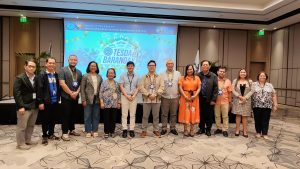An environmental advocacy group lamented that the Rainwater Harvesting Ordinance is not fully implemented, thus causing massive wastage of world-class quality water.
Under the Rainwater Harvesting Ordinance of 2009, establishments in the city are mandated to build rainwater catchment facilities in their buildings.
According to the Interface Development Interventions (IDIS), they surveyed 100 establishments in 2017 but only 24% complied with the ordinance.
Last year, the IDIS conducted a survey in 100 other establishments in the city and they found out that only 26% complied.
“We continue to strongly urge establishments and even the local government to monitor even minor commercial establishments, and the households,” IDIS Environmental Research Specialist Lemuel Manalo said in a press conference yesterday.
According to IDIS, an average of 2,688 millimeters of rain is received by the city every year, and 100,000 liters of free rainwater are available annually for harvesting by a typical 50-square meter roof catchment.
But rainwater, the IDIS said, just “floods the city’s urban district during periods of heavy rain” primarily due to the lack of implementation.
According to data from the Davao City Water District, the city’s consumption is already 320 million liters per day in 2019, “with the increase attributed to hotel construction, industries, and commercial establishments along with the influx of laundry shops and car washes.”
According to Manalo, the said number calls for the reinforced implementation of the rainwater harvest facility especially that the water of the city is sourced from ground water aquifers that take a long time to recharge.
“The demand is really high nowadays with our population increasing, and there are also changes on the land use that also affects the water demand,” Manalo added.
IDIS Managing Trustee Mary Ann Fuertes stated that the unutilized rainwater may have helped supply the city for its non-potable water needs.
“If we only have rainwater catchment in our households and in the establishments, we can save much water given our average rainfall. If we only realize how much we are wasting our groundwater for flushing our toilet, or washing our cars,” Fuertes said.
IDIS said that water conservation is not just the responsibility of a single sector but the responsibility of everyone.




